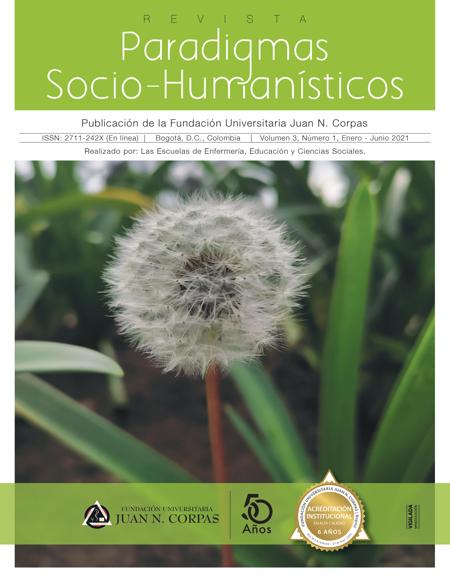Abrams, Z. I. (2002). Surfing to cross-cultural awareness: using Internet-mediated projects to explore cultural stereotypes. Foreign Language Annals, 35(2), 141-160.
DOI: https://doi.org/10.1111/j.1944-9720.2002.tb03151.x
Adler, N. (1997). International Dimensions of Organizational Behavior. South-Western College Publishing.
Alvino, E & (Ed.). (2008). Culture in the classroom. Essential teacher journal, 5(4).
Bachman, L. F. (1990). Fundamental Considerations in Language Testing. OUP.
Barletta, N. (2009). Intercultural competence: another challenge. Profile: Issues in Teacher's Professional Development, 11, 143-158.
Bennett, M. (1998). Basic concepts of intercultural communication. Intercultural Press.
Byram, M. & Morgan, C. (1994). Developing a theory of language-and-culture learning. In Teaching and Learning Language and Culture (p. 4-40). Multilingual Matters.
Byram, M., Gribkova, B. & Starkey, H. (2002). Developing the intercultural dimension in language teaching: A practical introduction for teachers. Council of Europe. http://www.coe.int/t/dg4/linguistic/Source/Guide_dimintercult_En.pdf.
Byram, M. & Zarate, G. (1997). The sociocultural and intercultural dimension of language learning and teaching. Council of Europe.
Canale, M. & Swain, M. (1980). Theoretical basis of communicative approaches to second language learning and testing. Applied Linguistics, 1(1), 1-47.
DOI: https://doi.org/10.1093/applin/1.1.1
Council of Europe. (2001). Common European Framework of Reference for Language Learning. CE.
Deardorff, D. (2006). Identification and Assessment of Intercultural Competence as a Student Outcome of Internationalization. Journal of Studies in Intercultural Education, 10, 241-266.
DOI: https://doi.org/10.1177/1028315306287002
Delors, J. (1996). La educación encierra un tesoro. Correo de la Unesco.
De Mejía, A. M. (2004). Bilingual Education in Colombia: Towards an Integrated Perspective. International Journal of Bilingual Education and Bilingualism, 7(5).
DOI: https://doi.org/10.1080/13670050408667821
Fantini, A. & Tirmizi, A. (2006). Exploring and assessing intercultural competence. World Learning Publications. Paper 1. http://digitalcollections.sit.edu/worldlearning_publications/1
Gómez Rodríguez, L. F. (2015). Critical intercultural learning through topics of deep culture in an EFL classroom. Íkala, Revista de Lenguaje y Cultura, 20(1), 43-59. doi: 10.17533/udea.ikala.v20n1a03
DOI: https://doi.org/10.17533/udea.ikala.v20n1a03
Hall, E. T. (1976). Beyond Culture. Garden City.
Hernández, O. & Samacá, Y. (2006). A Study of EFL Students' Interpretations of Cultural Aspects in Foreign Language Learning. Colombian Applied Linguistics Journal.
Hincapie, J. P. & Guevara, Y. R. (2016). Raising intercultural awareness through speaking tasks in fifth graders classroom project (unpublished master's thesis). Universidad Tecnológica de Pereira, Facultad de Bellas Artes y humanidades. Retrieved April 18, 2018, from http://repositorio.utp.edu.co/dspace/bitstream/handle/11059/7226/4101H659.pdf?sequence=1
Jaramillo, N. (2015). A proposal to improve intercultural communicative competence through videos in an English program of a private university [Ebook]. Universidad Escuela de Ciencias de la Educación. https://repository.icesi.edu.co/biblioteca_digital/bitstream/10906/78766/1/T00386.pdf
Kramsch, C. (2001). Context and culture in language teaching. Oxford University Press.
MEN. (201&). Pedagogical principles and guidelines suggested English curriculum 6th to 11th grades: English for diversity and equity. Gobierno de Colombia. Retrieved April 18, 2018, from: https://aprende.colombiaaprende.edu.co/sites/default/files/naspublic/colombiabilingue/dbacurriculo/cartilla_orientaciones_docentes/Pedagogical%20Principles%20and%20Guidelines.pdf
Meyer, M. (1991). Developing transcultural competence: case studies of advanced foreign language learners. In D. Buttjes & M. Byram (Eds.), Mediating languages and cultures. Multilingual Matters.
Paige, R. M., Jorstad, H. L., Siaya, L., Klein, F. & Colby, J. (2003). Culture learning in language education: A review of the literature. In D. L. Lange & R. M. Paige (Eds.), Culture as the core: Perspectives on culture in second language learning (pp. 173-236). Information Age Publishing.
Reid, E. (2015). Techniques developing intercultural communicative competences in English language lessons. Procedia - Social and Behavioral Sciences, 186, 939-943. https://doi.org/10.1016/j.sbspro.2015.04.011
DOI: https://doi.org/10.1016/j.sbspro.2015.04.011
Spencer-Oatey, H. (2008) Culturally Speaking. Culture, Communication and Politeness Theory. 2nd edition. Continuum.
Straub, H. (1999). Designing a cross-cultural course. English Forum, 37(3).
Tarone, E. & Swain, M. (1995). A sociolinguistic perspective on second-language use in immersion classroom. Modern Language Journal, 79, 166-178. http://citeseerx.ist.psu.edu/viewdoc/download?doi=10.1.1.507.3128&rep=rep1&type=pdf
DOI: https://doi.org/10.1111/j.1540-4781.1995.tb05428.x
Unesco. (2013). Intercultural Competences: Conceptual and Operational Framework. Unesco. http://www.unesco.org/new/en/bureau-of-strategic-planning/themes/culture-of-peace-and-non-violence/
Wright, S. (1998). The politicization of ‘culture'. Anthropology today, 14(1), 7-15.
DOI: https://doi.org/10.2307/2783092










